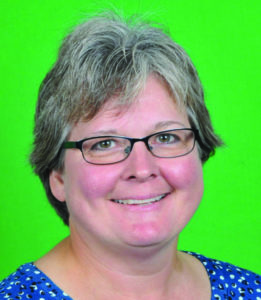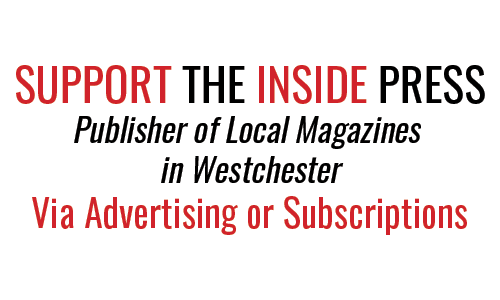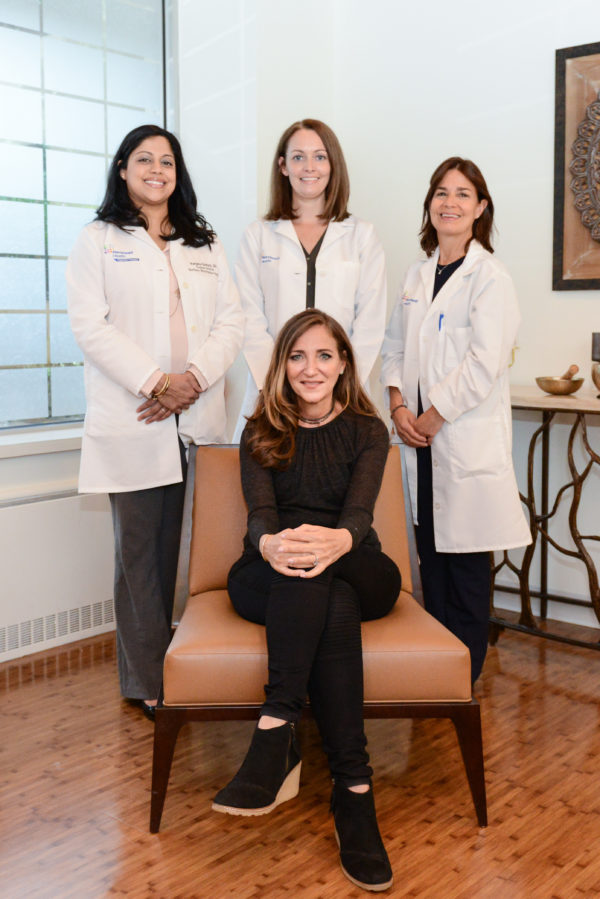
The Blessings of Early Detection and Excellent Treatment
Self-described “gym rat” Eileen Cohen looks the very picture of health as we sit down to a morning coffee at Tazza of Millwood. Watching her enter the café, fit and trim with a bounce to her step, one would never know we were meeting to discuss her recent health sCare.
No, that is not a typo; call it this writer’s literary device, my way of introducing two highly intertwined topics–the “big C, Cancer, and the importance of Care. From healthcare providers to friends and family, Care is a patient’s most valuable resource.
Eileen’s health scare came during her annual routine mammogram. She’d scheduled the exam, expecting the usual “everything looks good, see you next year” results. Instead, this time, Eileen recalls hearing the technician offer a quiet “hmmmmm,” and telling her she needed to stay and speak with the radiologist. She was informed that her mammogram showed new calcifications, and she was given the option of observation versus biopsy. However, a biopsy was recommended to rule out malignancy. She chose the biopsy, saying, for her, there was no question. But, then she paused to reflect, “Maybe people get scared. I don’t know the mindset of others… but I can’t imagine not wanting to know.”
Wife and mother (to three busy teenagers), this Chappaqua mom had just celebrated turning 50 years young when the subsequent biopsy forever changed her life. The pathology was classic-type Lobular Carcinoma in Situ (LCIS); while LCIS is not a cancer, it is a proliferative process that connotes an increase in lifetime breast cancer risk in either breast. Given the increased risk of breast cancer, Dr. Ranjana Chaterji, a Northwell Health Breast Surgeon and Director of Quality at The Breast Institute at Northern Westchester Hospital (NWH) did an MRI with contrast which showed another spot. This was near the original area of concern and, when biopsied, was shown to be more classic-type LCIS. Surgical excision was recommended to rule out an associated invasive breast cancer component. There is only a five percent chance of upgrade to invasive breast cancer at the time of surgical excision, but Eileen fell into that five percent category; her pathology report confirmed Invasive Lobular Carcinoma, which would require definitive cancer surgery and treatment.
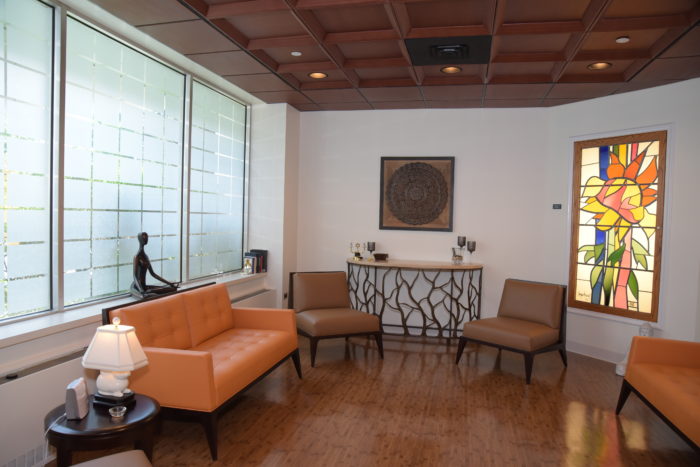
However, prior to surgery, patients undergo preoperative medical clearance, including, for some like Eileen, cardiac clearance. Eileen’s pre-surgery cardiology visit resulted in the finding of yet another medical issue–PVC, or Premature Ventricular Contractions. This condition can be treated with medication or surgery; Eileen needed surgical correction.
Given these diagnoses, there are, doubtless, many who would feel angry, depressed or a combination of both. Eileen, however, feels lucky and thankful–lucky that her original diagnosis led to the more invasive cancer diagnosis, and thankful that her cardiology tests caught her weakening heart condition in time to successfully rebound!
Thankfulness is, in fact, a recurring theme in our conversation. Eileen describes her close-knit family as supportive, explaining that though she “didn’t want to include them in everything going on; that would actually make it harder (on her),” her children and husband really rallied to step up and step in to fill in where needed. For example, both her girls were serious dancers with companies in NYC, and it had been Eileen’s pleasure to drive them to the city for their classes. During treatment, however, they learned to navigate the trains and travel to classes themselves, gaining an independence Eileen sees as a silver lining. And, while recent college tours for Eileen’s son had been a great opportunity for family road trips, post-diagnosis visits became more of a father/son activity. She is very grateful that her husband could take off days from work as necessary during her surgeries and radiation treatments.
Support wasn’t limited to immediate family. Friends gathered around, some making the time to call and check in every day. And, in a strange turn of events, Eileen also found out that a younger cousin was going through a similar experience. In fact, the women actually began radiation on the very same day. Eileen describes daily texts with her cousin–texts of encouragement and information-sharing (e.g., which clothes are most comfortable)–and also underscores the sense of relief that their mutual experience and support affords; there is nothing quite like going through something with someone you know who is experiencing the very same situation.
And then there’s the equally invaluable support of dedicated professionals. Eileen credits not only her team of expert physicians at Northern Westchester Hospital – Dr. Chaterji was joined by Dr. Alfred Tinger, the Former Chief of Radiation Oncology specializing in breast cancer treatment –but also the adjunct services available there. She took full advantage of the free programs available to cancer patients at NWH’s Bruce and Andrea Yablon Cancer Health and Wellness Program. The program is available to all cancer patients in the community regardless of whether or not their oncologist is located at the hospital. As long as one of their physicians has admitting privileges to the hospital, they can participate in the program.
These services include: Integrative Medicine, such as acupuncture, aromatherapy, energy healing/Reiki, guided imagery, oncology medical massage and reflexology; Nutritional Support with a Registered Dietician which helps patients eat well during and after treatment; Fitness Programming specially tailored to patients’ needs; Mindful Wellness with licensed psychiatrists, psychologists, pastors and social workers and the Survivorship Program to ease patients back into life after cancer. What’s more, there are additional workshops, special programs and resources available to cancer patients, survivors and caregivers too.
Everyone’s needs differ, and those different needs become even more pronounced during cancer treatment. Personally, Eileen especially liked visiting the acupuncturist and her nutritionist, Pat Talio. She found acupuncture helped “give (her) balance during an unbalanced time” and that the nutritionist could help her refine her diet so as to avoid questionable ingredients and additives.
NWH’s Licensed Acupuncturist Vanessa McKay-Barr says, “Eileen is one of those patients that does the homework you give them. Whether it’s treatment frequency, exercises, or dietary suggestions, she did the work and it paid off. Her persistence and desire to have the best results for her mind, body, and soul was inspiring to see. She focused on the positives of treatment and didn’t let any symptoms overcome her thoughts. I particularly enjoyed talking to her about her family and watching her face brighten as she would speak of her children. She was a pleasure to work with and I wish her the best in her journey of Cancer Survivorship.”
Rounding out support are the nurses and technicians, each and every one, the very definition of “caregiver.” Patients are treated with empathy and respect, welcomed with smiles and given endless understanding.
The facility itself is bright, cheerful and comfortable with waiting-room activities (Eileen particularly liked the puzzles) to help patients relax prior to treatment. There is even valet parking for those who need that level of assistance. Fighting cancer can be physically, spiritually, emotionally and psychologically debilitating, but getting treatment at NWH and making use of its additional services gives a patient the very best in team support to help win that fight. For further information on the Bruce and Andrea Yablon Cancer Health and Wellness program, call 914-242-8146 or visit www.nwhcancercenter.org.
Exercising Good Health
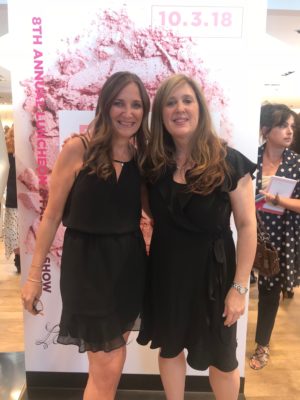
PHOTOS COURTESY OF EILEEN COHEN
In the past, cancer patients were often told to “take it easy,” to save their strength and reduce exercise activity. But, like treatment itself, this advice has changed dramatically over the years. Nowadays, if a patient feels up to it, most doctors support maintaining an exercise routine. In fact, the American Cancer Society notes, “newer research has shown that exercise is not only safe and possible during cancer treatment, but it can improve how well you function physically and your quality of life.”
No one would agree more with this than Eileen who shared, “The fact that I was able to work out through my treatments made me feel like myself.” She further noted that it was during one of her regular Saw Mill exercise classes that she connected with one of her instructors on a whole new level. Eileen had shown up for a 7:30 a.m. class (prior to her scheduled surgery no less!) and happened to fall into a fundraiser for Pink Aid. Coincidence? Perhaps, but maybe something of a higher power brought Eileen to that class on that day. She believes in a higher power, and that the path to spiritual fulfillment is personal; even the gym can be a powerful place of inspiration and well-being.
Through her class instructor, Denise Walker, also a breast cancer survivor, Eileen has become an advocate, helping to raise both awareness (of the need for early detection) and funds (for those who need financial help for treatment). She says, “I was private while I was going through treatment, but I feel like if I can help others recognize that they need to take care of themselves and be proactive, I will.” On October 3rd, Eileen “walked” in the 8th annual Pink Aid Fashion Show sponsored by Mitchells of Westport, CT. Critical funds were raised for the organization whose “mission is to help underserved local women…and to empower breast cancer survivors to heal by helping and inspiring others.” Indeed, according to Eileen, laughter, tears and wisdom were shared amongst speakers and attendees. There was a communal spirit of support and gratitude; each woman felt grateful to be connected to the others there, grateful for their access to excellent healthcare and, ultimately, grateful for their lives.
The Point Is: NWH’s Vanessa Mckay-Barr, L.Ac Explains How Acupuncture Can Help Cancer Patients
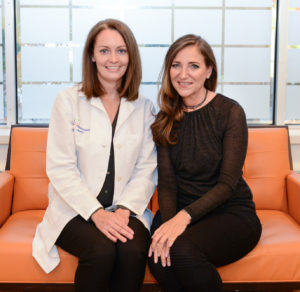
When a patient gets a cancer diagnosis and is quickly thrust into treatment, there is tremendous emotional impact. In fact, stress and anxiety are the most prevalent issues for these acupuncture patients. Acupuncture helps a person’s body go from fight or flight mode to rest and relax mode. By reducing stress and calming the mind, acupuncture leaves patients with a greater sense of well-being. For this reason, McKay-Barr often refers to acupuncture as “inner-cise” (exercise for your energy).
Acupuncture also helps alleviate many of the side effects from cancer treatment such as nausea and vomiting, chemotherapy induced neuropathy, menopausal symptoms, dry mouth, fatigue, constipation, and insomnia. Furthermore, in addition to the clinical value, there is a psychological and emotional benefit; acupuncture creates balance in the Central Nervous System by regulating hormones such as serotonin, noradrenaline, and dopamine. This can alter mood chemistry and help address the physical impact caused by cancer and cancer treatment. In Chinese Medicine theory, emotions are stored in a person’s blood. Therefore, by improving circulation, acupuncture helps move, release and let go of emotions (those due to the stress of a cancer diagnosis or even from long-ago issues) that can be held in the body.
Through the Bruce and Andrea Yablon Cancer Health and Wellness Program at NWH, McKay-Barr’s acupuncture sessions help alleviate any issues patients have from cancer treatment. However, she says she “most enjoys seeing patients work through the most difficult part of their lives and come out on the other side with a gratitude that you cannot teach. The gift of life, positivity, gratefulness, and an overall improved quality of life from this process is so rewarding to see. This is why I love what I do.”
Saw Mill Club and NWH: Two Local Resources for Health, Well-Being and a Sense of Community
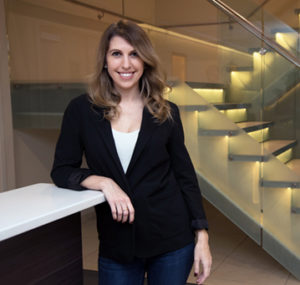
PHOTO COURTESY OF SAW MILL CLUB
The Saw Mill Club is so much more than a place to exercise. According to Barbara Accetta, Media and Creative Director for the club, the real impact comes from the sense of community felt throughout the club. She shares that there’s a “real healing environment that can be felt whether you are in a class or not. Each person will find someone who has a journey just like theirs, whether it be injury or illness.” As noted above, the sense of camaraderie and relief a shared health journey affords cannot be understated. Agrees Accetta, “find someone who has a place where they feel they “belong” and you will find someone who is thriving.”
Accetta also points out that, while the club offers multiple varieties of classes for all different levels of experience, and has instructors with general and/or specific knowledge, specific post-illness and post-injury members should consult with their healthcare providers to best navigate their particular needs. The club does have Physical Therapy, one-on-one personal training and massage–all great options for anyone and everyone’s well being.
The Saw Mill Club and NWH have a long and steadfast relationship, and their proximity to each other makes for an easy partnership. Saw Mill has participated in “exercise as medicine” for several patient groups including new mothers, cancer survivors, and hip and knee patients. Saw Mill has also hosted the Annual Hospital Gala on four occasions over the last ten years, turning their indoor tennis courts into a spectacular space for this special fundraiser evening.
Like NWH, Saw Mill is one of Mount Kisco’s larger employers, and has collaborated on wellness programs for hospital employees as well as currently offering a special membership relationship. In the words of General Manager and Vice President, Kevin Kane, “We have common aims for the success of Mt. Kisco and care deeply about our Village by participating in several civic boards and committees.”

